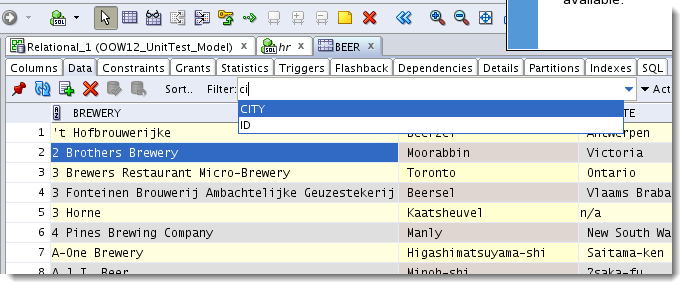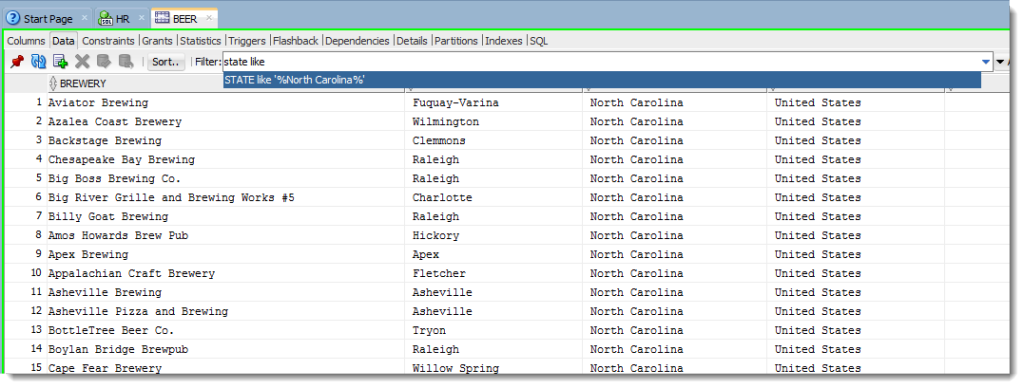This week I had the opportunity to play a little with the new and recently released Oracle DB 12c. This version brings a new approach for databases, calledPluggable Databases. There are plenty of articles and YouTube videos already explaining this and I will not focus this article on it. Instead, I want to help you on How to Install Oracle Fusion Middleware Infrastructure on Oracle DB 12c.
There are a couple of steps and commands to be followed, and some very important observations. Starting with a simple one:
Do NOT execute the RCU installer on top of a CDB.
One more time: do NOT execute RCU on top of a CDB.
If you do point the RCU tool to install over a CDB, you might get this message:
ORA-65096: invalid common user or role name
Now with this in mind, I believe you have understood that the first step is, obviously, to create a PDB. There are some options, but I will use pure SQL commands.
Step 0 - Use the correct encoding for your Database install
Make sure you have installed your DB with the AL32UTF8 encoding.
This is recommended, but it might work in case you are using something else.
Step 1 - Create a PDB to hold the FMW Infrastructure Data
The following command will create a PDB called PDBFMW with a user "fmw" and password "welcome1".
SQL>CREATE PLUGGABLE DATABASE PDBFMW ADMIN USER fmw IDENTIFIED BY welcome1
FILE_NAME_CONVERT=(
'/u01/app/oracle/oradata/orcl/pdbseed/system01.dbf',
'/u01/app/oracle/oradata/orcl/pdbfmw/system01.dbf',
'/u01/app/oracle/oradata/orcl/pdbseed/sysaux01.dbf',
'/u01/app/oracle/oradata/orcl/pdbfmw/sysaux01.dbf',
'/u01/app/oracle/oradata/orcl/pdbseed/pdbseed_temp01.dbf',
'/u01/app/oracle/oradata/orcl/pdbfmw/pdbfmw_temp01.dbf'
)
STORAGE UNLIMITED
Please make sure to adjust the values to your installation.
Step 2 - Open the PDB for changes
After you have the PDB created, make sure you change its state to READ_WRITE
SQL> ALTER PLUGGABLE DATABASE PDBFMW OPEN READ WRITE
Step 3 - Fix user privileges
Now you must make sure the user "fmw" has all required privileges. As this is for Development, I will just give everything.
SQL> GRANT ALL PRIVILEGES TO fmw WITH ADMIN OPTION
SQL> GRANT SYS TO fmw
* Important note: I'm not a DBA expert and these might not be the correct privileges for production environment. So please make sure to give only the necessary privileges following the documentation.
Step 4 - Run the RCU tool
This step considers that you have correctly installed Fusion Middleware Infrastructure into your Middleware Home / WebLogic installation folder. In my case, I'm using the full WebLogic + JDeveloper installation package, which brings the FMW Infra bundled. Now go to your $MW_HOME folder and run the RCU tool:
$ cd $MW_HOME
$ cd oracle_common/bin
$ ./rcu
Make sure to use the correct properties to connect to your recently created Pluggable Database:
Database Type: Oracle Database
Host Name: db12c (change to your DB IP address)
Port: 1521
Service Name: pdbfmw (here you use the PDB name)
Username: fmw
Password: welcome1 (or whatever you defined)
Role: SYSDBA
Click "Next" and see if it worked. If you are not using AL32UTF8, it will ask you to Ignore. Just do it, but remember: it might not work properly.
Step 5 - Select components and create new prefix
I like to select everything, and use the "FMW" prefix. Click "Next", "Next", "Next", etc, etc, etc... Until it finishes.
FINISHED!
You have successfuly created the right database structure for your Fusion Middleware Infrastructure, and now you can create a WebLogic domain with ADF and everything else, pointing to this PDB.
If you have any question, post a comment!
 Zone. Get familiar now with everything happening at the Zone and make the most out of it.
Zone. Get familiar now with everything happening at the Zone and make the most out of it. 











![image[7][2][2][2] image[7][2][2][2]](http://soacommunity.files.wordpress.com/2013/04/image7222.png?w=20&h=20&h=20)
![clip_image002[8][4][2][2][2] clip_image002[8][4][2][2][2]](http://soacommunity.files.wordpress.com/2013/04/clip_image00284222.jpg?w=26&h=23&h=23)






